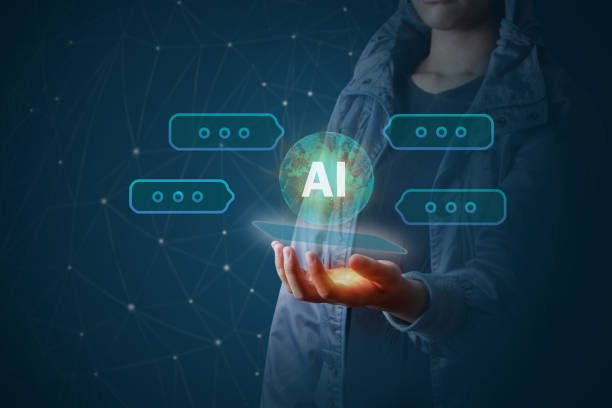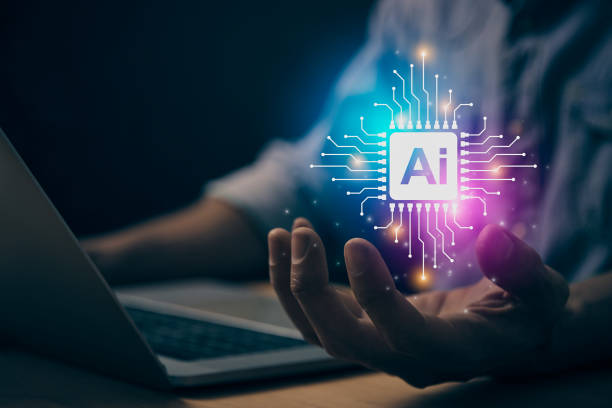What is an AI Robot and How Does It Work?
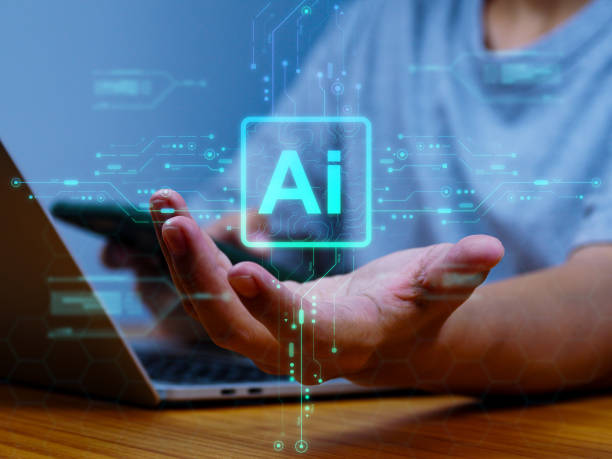
#AI Robot is a combination of two distinct concepts: robotics and artificial intelligence.
In essence, an AI robot is a physical machine capable of performing tasks that typically require human intelligence, by utilizing artificial intelligence algorithms.
These tasks can include learning, problem-solving, decision-making, pattern recognition, and natural language understanding.
Artificial intelligence here acts as the brain of the robot, allowing it to interact with its environment and react based on the data it collects.
The operational mechanism of an AI robot typically involves the following stages:
- Sensing: The robot gathers information from its surroundings through various sensors (such as cameras, microphones, touch sensors, etc.).
- Processing: This information is processed by artificial intelligence algorithms.
These algorithms can include artificial neural networks, machine learning algorithms, and other AI techniques. - Decision-Making: Based on the processed information, the robot makes a decision on how to react to the environment.
This decision can involve movement, speaking, manipulating objects, and so forth. - Acting: The robot executes its decision using its actuators (such as motors, arms, hands, etc.).
In summary, AI robots combine the computational power of artificial intelligence with the physical capabilities of robotics, enabling more complex and intelligent automation of tasks.
Does your current corporate website present a worthy image of your brand and attract new customers?
If not, transform this challenge into an opportunity with Rasaweb’s professional corporate website design services.
✅ Significantly improves your brand’s credibility and image.
✅ Paves the way for attracting leads and new customers.
⚡ For a free and expert consultation, contact Rasaweb now!
Diverse Applications of AI Robots in Various Industries
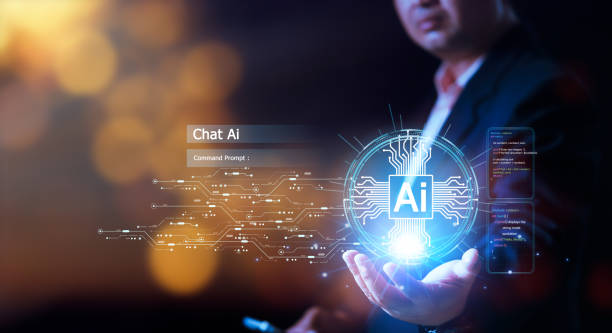
AI robots are currently used in a wide range of industries and play a significant role in improving efficiency, reducing costs, and enhancing safety.
Some of their key applications include:
- Manufacturing: AI robots are used in production lines for tasks such as assembly, quality inspection, and packaging.
These robots can work continuously and with high precision, leading to increased productivity and reduced errors. - Healthcare: AI robots are utilized in complex surgeries, rehabilitation, elderly care, and even disease diagnosis.
They can enhance the precision of surgeons, assist patients in rehabilitation, and help doctors diagnose diseases faster and more accurately.
Read more here - Customer Service: AI-powered chatbots can answer customer questions, resolve their issues, and provide information about products and services.
These robots help businesses provide 24/7 customer service and reduce human labor costs. - Logistics and Transportation: AI robots are employed in warehousing, goods transportation, and package delivery.
They can automatically collect and pack goods from warehouses, deliver packages to their destinations, and find optimal routes for transportation. - Agriculture: AI robots are used in agriculture for tasks such as planting, harvesting, irrigation, and spraying.
They can help farmers increase productivity, reduce water and fertilizer consumption, and utilize natural resources sustainably.
These are just a few examples of the countless applications of AI robots.
With the rapid advancement of technology, it is expected that the applications of these robots will become wider and more diverse in the future.
AI robots will shape tomorrow’s world.
Key Components of an AI Robot: A Specialized Review
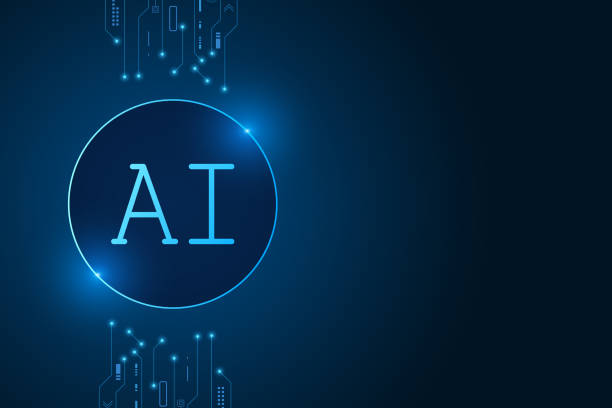
An AI robot is composed of several main components that work together to enable the performance of various tasks.
These components include:
- Sensors: Sensors are devices that collect information from the surrounding environment.
There are various types of sensors, each designed to collect a specific kind of information.
For example, cameras are used to collect visual information, microphones for audio information, touch sensors for touch-related information, and temperature sensors for temperature data. - Actuators: Actuators are devices that create movement or changes in the environment.
Motors, arms, hands, and speakers are examples of actuators. - Controller: The controller is the brain of the robot, responsible for processing information collected by sensors and controlling actuators.
The controller is usually a computer or microcontroller programmed to execute AI algorithms. - Power Source: The power source provides the necessary energy for the operation of sensors, actuators, and the controller.
Batteries, AC power supplies, and solar cells are examples of power sources. - Artificial Intelligence Software: AI software is a collection of algorithms and programs that allow the robot to learn, solve problems, make decisions, and interact with its environment.
This software can include artificial neural networks, machine learning algorithms, natural language processing algorithms, and other AI techniques.
Interaction and coordination between these components are essential for the proper functioning of an AI robot.
| Component | Function |
|---|---|
| Sensors | Gathering information from the environment |
| Actuators | Creating movement or changes in the environment |
| Controller | Processing information and controlling actuators |
| Power Source | Providing energy |
| AI Software | Learning, problem-solving, decision-making |
AI robots can change our world.
Advantages and Disadvantages of Using AI Robots

The use of AI robots has numerous advantages and disadvantages, some of which are discussed below:
Advantages
- Increased Productivity: AI robots can work continuously and with high precision, leading to increased productivity and reduced errors.
- Cost Reduction: AI robots can replace human labor, reducing costs associated with wages, insurance, and benefits.
- Enhanced Safety: AI robots can operate in hazardous environments, preventing harm to humans.
- Improved Quality: AI robots can perform tasks with high accuracy and consistency, leading to improved quality of products and services.
- Performing Repetitive Tasks: AI robots are highly suitable for repetitive and tedious tasks, freeing up human resources for more complex assignments.
Disadvantages
- High Initial Cost: AI robots are typically expensive, and their purchase and setup can incur significant costs.
- Need for Expertise: Setting up, maintaining, and repairing AI robots requires specialized expertise, which may necessitate hiring specialists.
- Ethical Concerns: The use of AI robots can raise ethical concerns regarding job displacement, privacy, and accountability.
- Limitations: AI robots still have limitations in some areas and cannot fully replace humans.
The decision to use AI robots should be made by considering their advantages and disadvantages, as well as the specific conditions and needs of each business or organization.
An AI robot can be a powerful tool, but it must be used correctly.
Are you frustrated with your online store’s low conversion rate?
Rasaweb, with its professional e-commerce website design, is your definitive solution!
✅ Increase your sales and revenue
✅ Provide an unparalleled user experience for your customers
⚡ Get a free consultation now!
The Future of AI Robots: Prospects and Challenges

The future of AI robots is very bright and full of potential.
Recent advancements in artificial intelligence, robotics, and related technologies have enabled the development of smarter, more powerful, and more versatile robots.
It is expected that in the future, AI robots will play a more significant role in our daily lives and will be used in a wider range of industries.
These robots can assist humans in homes, hospitals, schools, factories, and other environments, making life easier and safer for us.
An immense transformation is underway for AI robots.
However, the development and use of AI robots also come with challenges.
Some of these challenges include:
- Development of More Advanced AI Algorithms: For robots to perform more complex tasks, there is a need to develop more advanced AI algorithms capable of learning, problem-solving, and decision-making in various situations.
- Improving Robot Security: Robots must be protected against cyberattacks and unauthorized manipulation to prevent unfortunate incidents.
- Addressing Ethical Concerns: Laws and regulations must be established to responsibly and ethically govern the use of AI robots and prevent their misuse.
- Workforce Training and Preparation: With the increasing use of robots, the demand for skilled labor to design, build, maintain, and repair robots will grow.
Therefore, appropriate training programs must be developed to prepare the workforce for these new jobs.
By overcoming these challenges, we can reap the countless benefits of AI robots and build a better, more sustainable future for ourselves and future generations.
The Difference Between Ordinary Robots and AI Robots
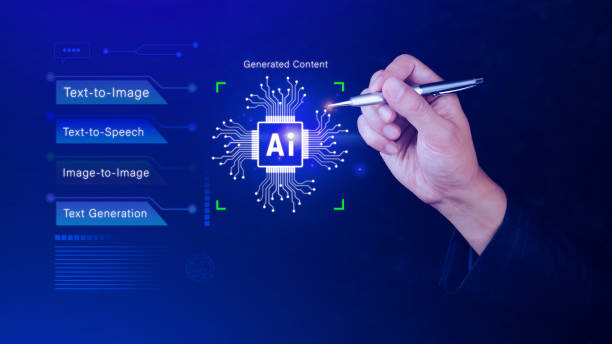
The main difference between ordinary robots and AI robots lies in their level of intelligence and autonomy.
Ordinary robots are typically programmed for specific and repetitive tasks and cannot make decisions or learn in new and unexpected situations.
They are entirely dependent on predefined instructions and show no creativity.
In contrast, AI robots, using artificial intelligence algorithms, are capable of learning, problem-solving, decision-making, and adapting to their environment.
They can perform new tasks and react to various conditions without explicit commands.
Here is a table presenting the key differences between these two types of robots:
| Feature | Ordinary Robot | AI Robot |
|---|---|---|
| Intelligence | Limited and dependent on programming | High and capable of learning |
| Autonomy | Very low and dependent on commands | High and capable of decision-making |
| Adaptability | Low and unchangeable | High and capable of adapting to the environment |
| Learning | Lacks learning capability | Possesses learning capability |
| Application | Repetitive and specific tasks | Complex and diverse tasks |
In summary, AI robots are smarter, more autonomous, and more adaptable than ordinary robots, and can be used in a wider range of applications.
The Role of Data in the Performance of AI Robots
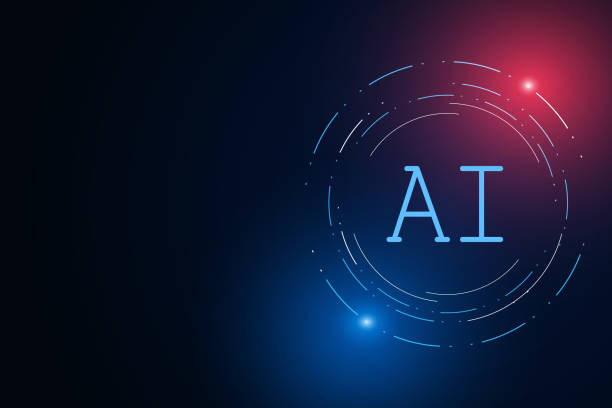
Data plays a crucial role in the performance of AI robots.
AI robots require data for learning, improving performance, and adapting to their environment.
Data helps robots identify patterns, learn relationships between variables, and create predictive models.
The more data available to the robot, the better and more accurate its performance will be.
Various types of data can be used to train AI robots, including:
- Sensory Data: Data collected through the robot’s sensors, such as images, sounds, tactile data, and temperature data.
- Labeled Data: Data that has been tagged with labels indicating its meaning and concept.
For example, an image might have the label “cat” or “dog.” - Unlabeled Data: Data that has no labels.
Robots can use unlabeled data to learn hidden patterns and data structures.
For data to be effectively used for training AI robots, it must be of high quality.
High-quality data must be accurate, complete, relevant, and error-free.
Additionally, data must be continuously collected and updated so that the robot can adapt to environmental changes.
AI robots have a strong dependency on data.
How to Program an AI Robot?

Programming an AI robot is a complex process that requires knowledge and skills in various fields, including robotics, artificial intelligence, and programming.
In general, the main steps for programming an AI robot are:
- Defining the Goal: The first step in programming an AI robot is to define its purpose.
It must be specified what tasks the robot is intended to perform and what problems it aims to solve. - Hardware Selection: Based on the robot’s goal, appropriate hardware must be selected.
Hardware includes sensors, actuators, the controller, and other electronic and mechanical parts. - Software Selection: After selecting the hardware, suitable software must be chosen.
Software includes the operating system, drivers, libraries, and AI algorithms. - Data Collection: To train the robot, data collection is necessary.
Data can be gathered from various sources, including robot sensors, databases, and simulations. - Training the AI Model: After data collection, the AI model must be trained.
Model training is typically performed using machine learning algorithms. - Testing and Evaluation: After training the model, it must be tested and evaluated.
Testing and evaluation are conducted to ensure the robot’s correct performance and to resolve any potential issues. - Deployment and Maintenance: After testing and evaluation, the robot is ready for deployment and use.
Once deployed, the robot must be regularly maintained to ensure its optimal performance.
Various programming languages such as Python, C++, and Java are used for programming AI robots.
Did you know that a poor corporate website costs you many opportunities daily? Solve this problem forever with professional corporate website design by Rasaweb!
✅ Create a powerful and reliable image for your brand
✅ Attract targeted new customers and increase sales
⚡ [Get a free website design consultation]
Ethics in AI Robotics: Responsibilities and Challenges

With the rapid advancement of AI robotics technology, ethical issues related to the design, development, and use of these robots have gained increasing importance.
These issues include accountability, privacy, safety, fairness, and the social impact of AI robots.
Accountability
One of the most important ethical issues in AI robotics is accountability.
If an AI robot makes a mistake or causes harm, who is responsible? The designer, the manufacturer, the programmer, or the user of the robot? Determining responsibility in such cases is difficult and requires a careful examination of conditions and laws.
Privacy
AI robots can collect a lot of information about humans, including personal data, behaviors, and habits.
This information can be used for various purposes, including advertising, surveillance, and control.
Protecting individuals’ privacy against unauthorized collection and use of this information is crucial.
Safety
AI robots must be designed and built to be safe and not harm humans.
This is particularly important for robots operating in hazardous environments or interacting with humans.
Fairness
AI robots should not be discriminatory and must treat all individuals equally.
This is especially important for robots involved in critical decision-making, such as hiring, lending, and law enforcement.
Social Impact
The widespread use of AI robots can have profound social impacts, including job displacement, increased inequality, and changes in social relationships.
These impacts must be carefully examined, and plans should be made to mitigate their negative effects.
AI robots are a novel phenomenon and must be handled with caution.
Resources and Tools for Learning AI Robotics
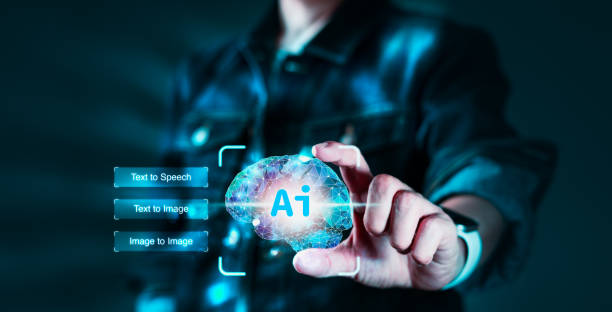
Learning AI robotics can be an exciting and rewarding journey.
Fortunately, many resources and tools are available to assist you along the way.
Here are some useful resources and tools for learning AI robotics:
- Online Courses: Online learning platforms like Coursera, edX, and Udemy offer various courses in AI robotics.
These courses are typically taught by university professors and industry experts and can provide you with a strong foundation in this field. - Books: Many books on AI robotics can help you learn basic and advanced concepts.
Some popular books in this area include “Artificial Intelligence: A Modern Approach” by Stuart Russell and Peter Norvig, and “Robotics, Vision, and Control” by Peter Corke. - Simulation Tools: Simulation tools like Gazebo and V-REP allow you to design, test, and program robots in a virtual environment.
These tools can help you enhance your AI robotics skills without needing actual hardware. - Robotics Kits: Robotics kits such as Arduino and Raspberry Pi enable you to build and program real robots.
These kits usually include the necessary hardware, software, and tutorials to get started. - Online Communities: Numerous online communities exist for AI robotics where you can connect with other enthusiasts and experts in the field, ask questions, and share your experiences.
Some popular communities in this area include Reddit (r/robotics) and Stack Overflow.
By utilizing these resources and tools, you can acquire the knowledge and skills necessary to enter the fascinating world of AI robotics.
AI robots have a bright future, and you can be a part of it.
Frequently Asked Questions
| Row | Question | Answer |
|---|---|---|
| 1 | What is an AI robot? | An AI robot is a machine capable of understanding, reasoning, learning, and problem-solving, and can perform complex tasks with relative autonomy. |
| 2 | What are the most important applications of AI robots? | Key applications include industrial manufacturing, customer service (chatbots), medicine and surgery, autonomous transportation, space exploration, and military affairs. |
| 3 | What is the main difference between an AI robot and an ordinary robot? | An ordinary robot merely follows programmed instructions, whereas an AI robot can learn from data, make decisions, and adapt to new environments. |
| 4 | How do AI robots learn? | They learn through machine learning algorithms (such as deep learning, reinforcement learning) and by processing vast amounts of data, identifying patterns, and improving their performance. |
| 5 | Can AI robots have emotions? | Currently, AI robots do not have real emotions in the human sense. They can mimic or detect emotions, but they do not understand or experience them. |
| 6 | What are the current limitations of AI robots? | Limitations include the need for large amounts of data, inability to understand abstract concepts, lack of true creativity, ethical issues, and generalization challenges in new environments. |
| 7 | What is the role of AI in the development of Humanoid robots? | AI helps humanoid robots walk, maintain balance, perceive their surroundings, interact with humans, and perform complex tasks. |
| 8 | How is the future of AI robots predicted? | AI robots are predicted to become smarter, more autonomous, and capable of performing more complex tasks in daily life and industry, with increased interaction with humans. |
| 9 | Can AI robots replace all human jobs? | It is unlikely that all human jobs will be replaced. Robots will take over many repetitive and dangerous tasks, but jobs requiring creativity, empathy, and ethical judgment will remain. |
| 10 | What ethical and social challenges arise with the expansion of AI robots? | Challenges include issues related to privacy, data security, ethical decision-making by robots, impact on employment, and accountability in case of errors. |
And other services of Rasaweb Advertising Agency in the field of advertising:
Intelligent Website Development: A professional solution for improving SEO ranking with a focus on Google Ads management.
Intelligent Sales Automation: A novel service for increasing customer acquisition through precise audience targeting.
Intelligent Content Strategy: A novel service for enhancing campaign management through key page optimization.
Intelligent Conversion Rate Optimization: Designed for businesses seeking to attract customers through intelligent data analysis.
Intelligent Conversion Rate Optimization: A fast and effective solution for online growth with a focus on Google Ads management.
And over hundreds of other services in the field of internet advertising, advertising consultation, and organizational solutions.
Internet Advertising | Advertising Strategy | Advertorials
Sources
What is Artificial Intelligence? A Complete Guide
AI News and Articles on Zoomit
Challenges of Building Iranian Smart Robots
Future Trends of Artificial Intelligence
“`html
? Transform your business in the online world with Rasaweb Afarin Digital Marketing Agency; from fast website design to comprehensive SEO strategies.
“`
📍 Tehran, Mirdamad Street, next to Bank Markazi, Southern Kazeroon Alley, Ramin Alley, No. 6

